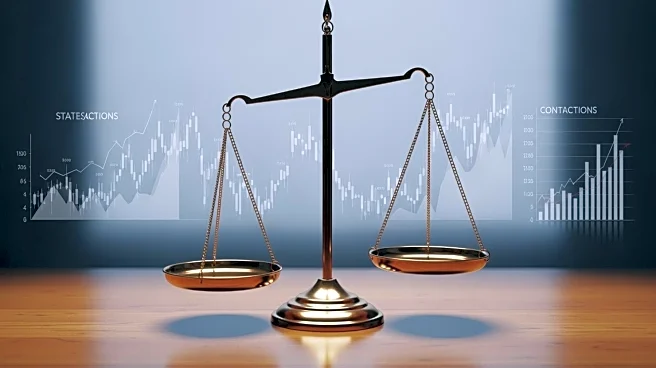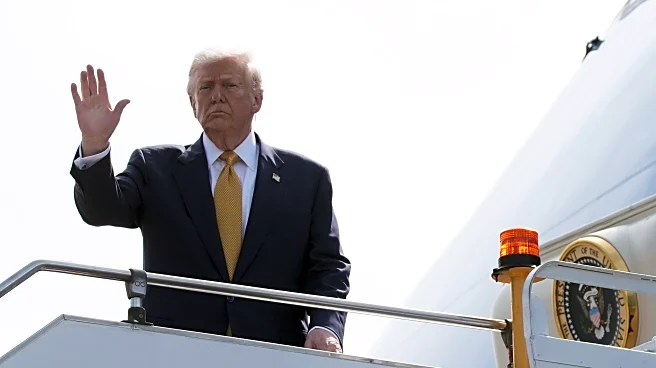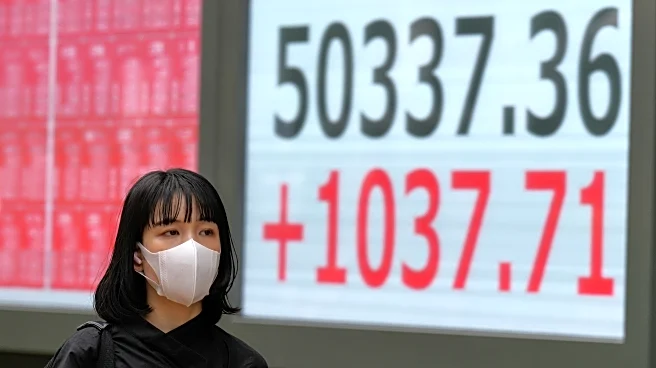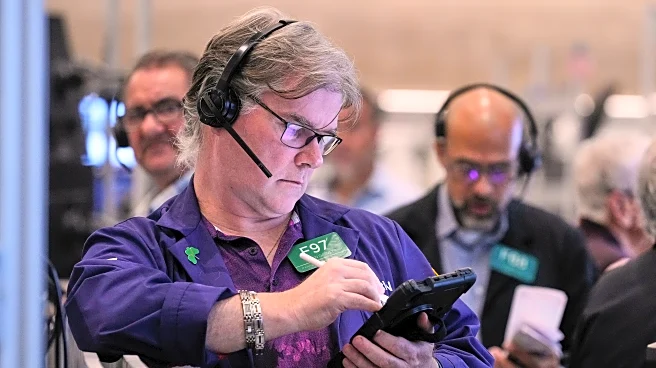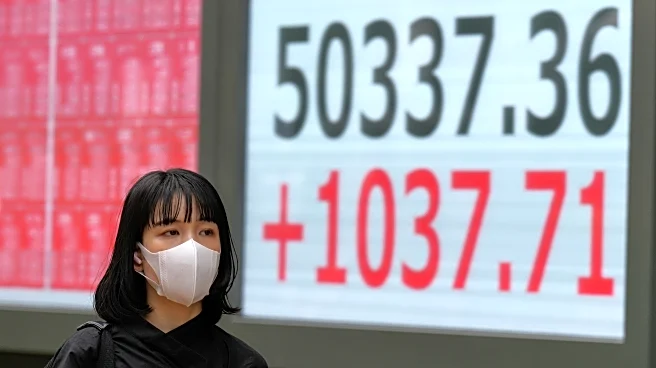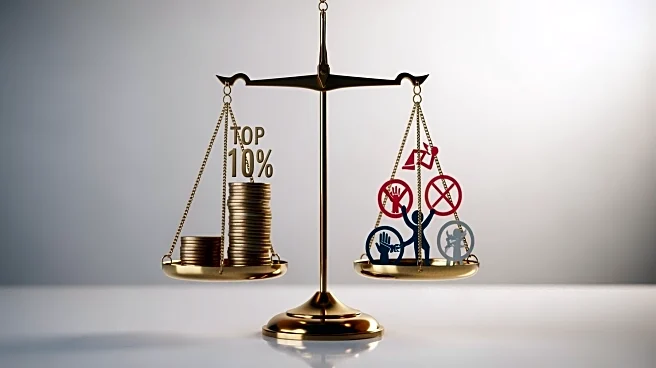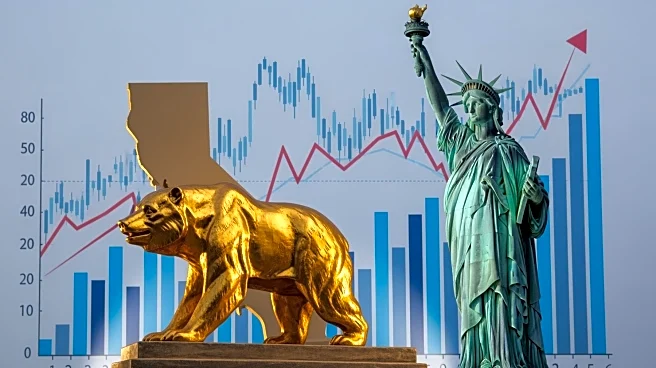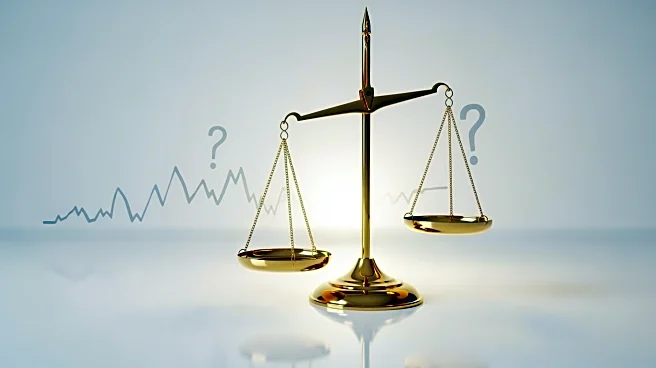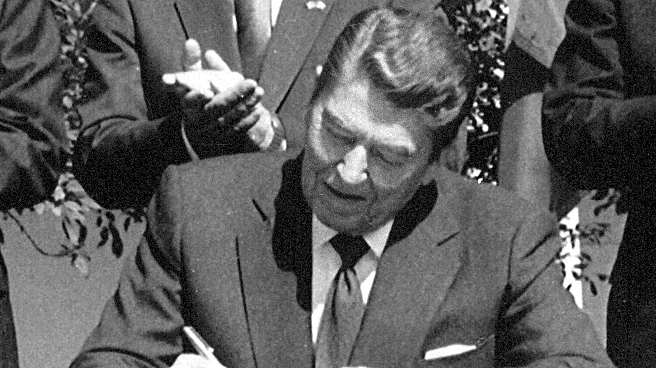What's Happening?
The U.S. economy is showing mixed signals, with 23 states experiencing economic contraction, according to Mark Zandi, chief economist at Moody's. Despite this, the national economy has managed to grow,
avoiding a recession due to substantial government spending during the pandemic. The Federal Reserve is considering further interest rate cuts to support the slowing job market, although inflation remains a concern. President Trump has announced a new stimulus package, the One Big, Beautiful Bill Act, aimed at boosting economic sentiment ahead of the midterms.
Why It's Important?
The actions of the White House and the Federal Reserve suggest a cautious approach to economic management, reflecting concerns about potential recessionary pressures. The stimulus measures and potential rate cuts are designed to sustain economic growth and employment, but they also raise questions about long-term fiscal sustainability and inflation control. The economic health of key states like New York and California could significantly influence national trends, highlighting the importance of regional economic stability.
What's Next?
The Federal Reserve's upcoming decisions on interest rates will be closely watched, as will the implementation of the new stimulus package. The economic performance of states currently 'treading water' could impact future policy decisions. Additionally, the political implications of these economic strategies will play a role in the upcoming midterm elections, potentially affecting the administration's approach to economic policy.
Beyond the Headlines
The extensive government spending and potential rate cuts raise concerns about the national debt and the independence of the Federal Reserve. The balance between supporting growth and controlling inflation will be crucial in maintaining economic stability. The broader implications for fiscal policy and economic governance could shape future debates on economic strategy and government intervention.
